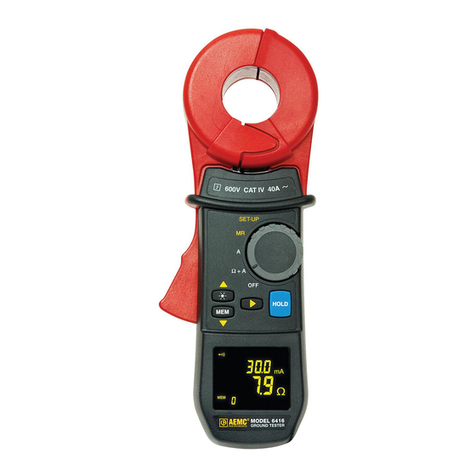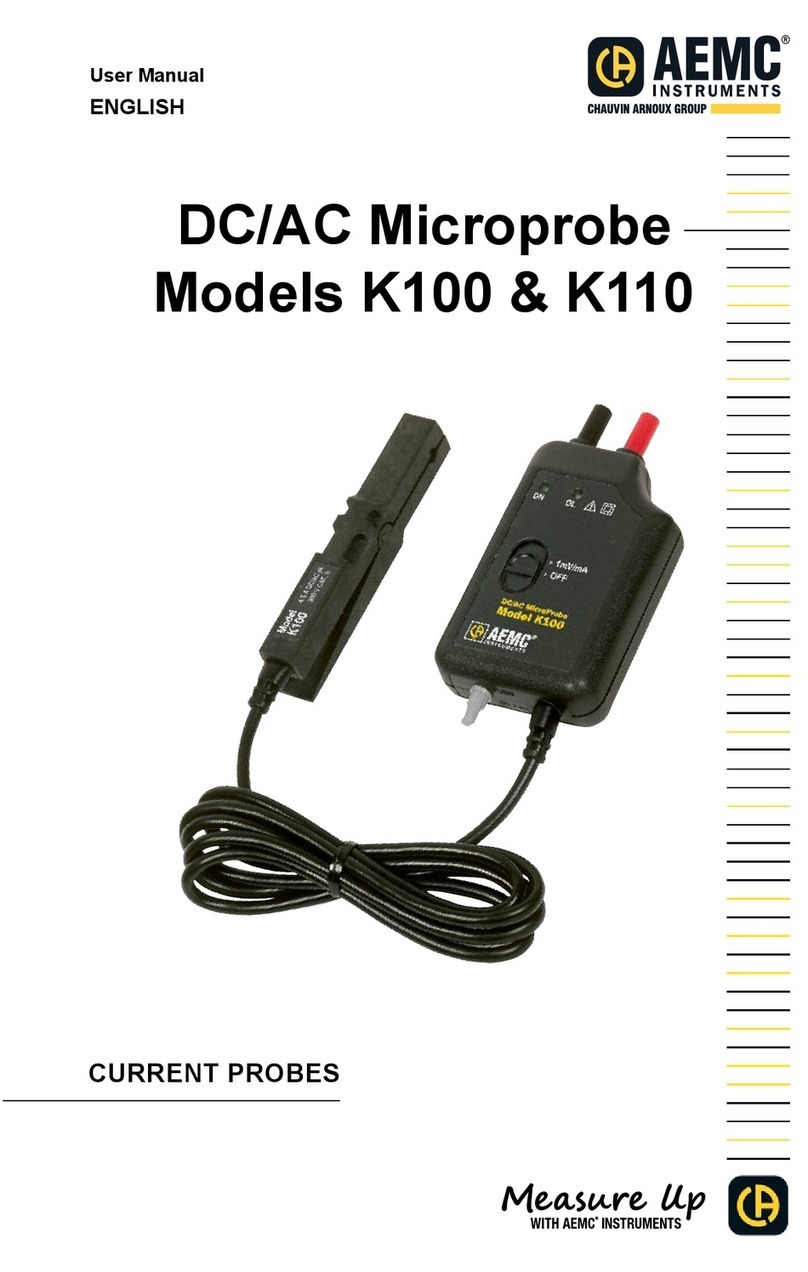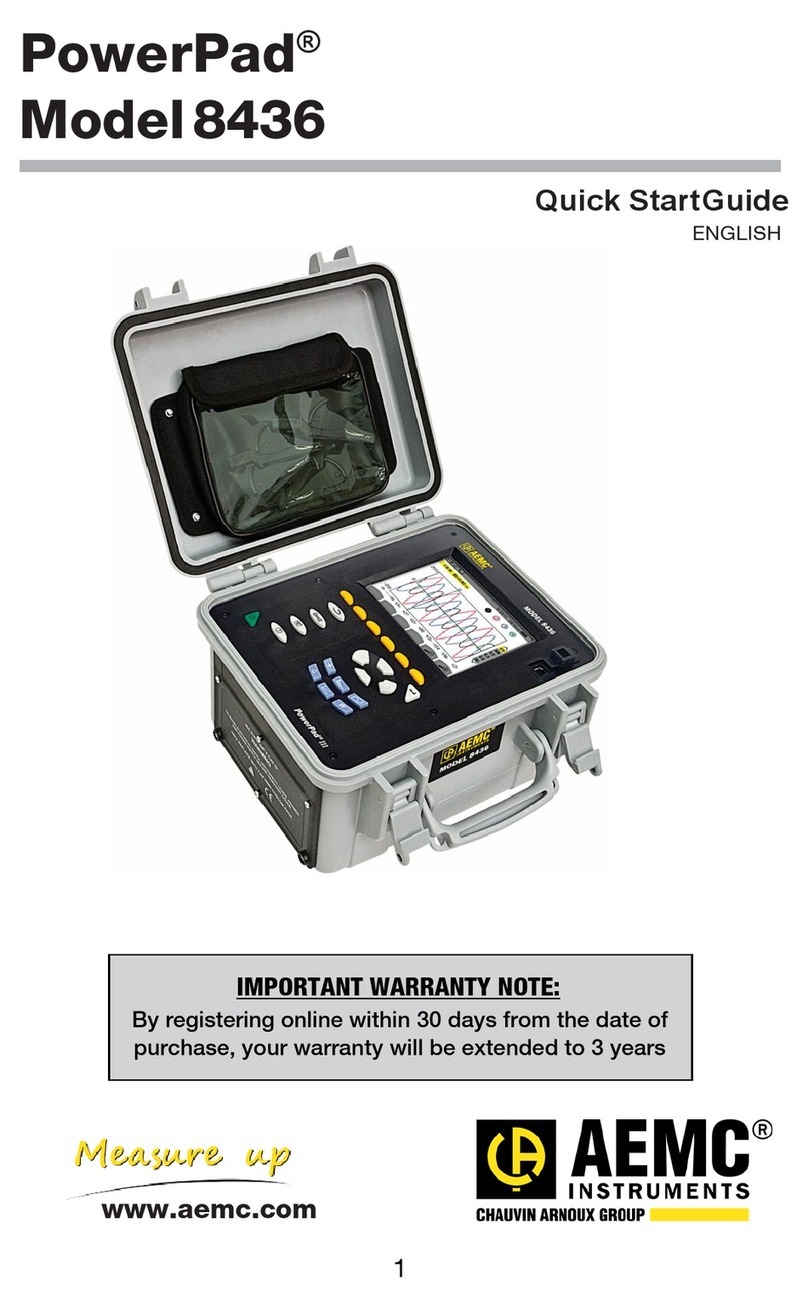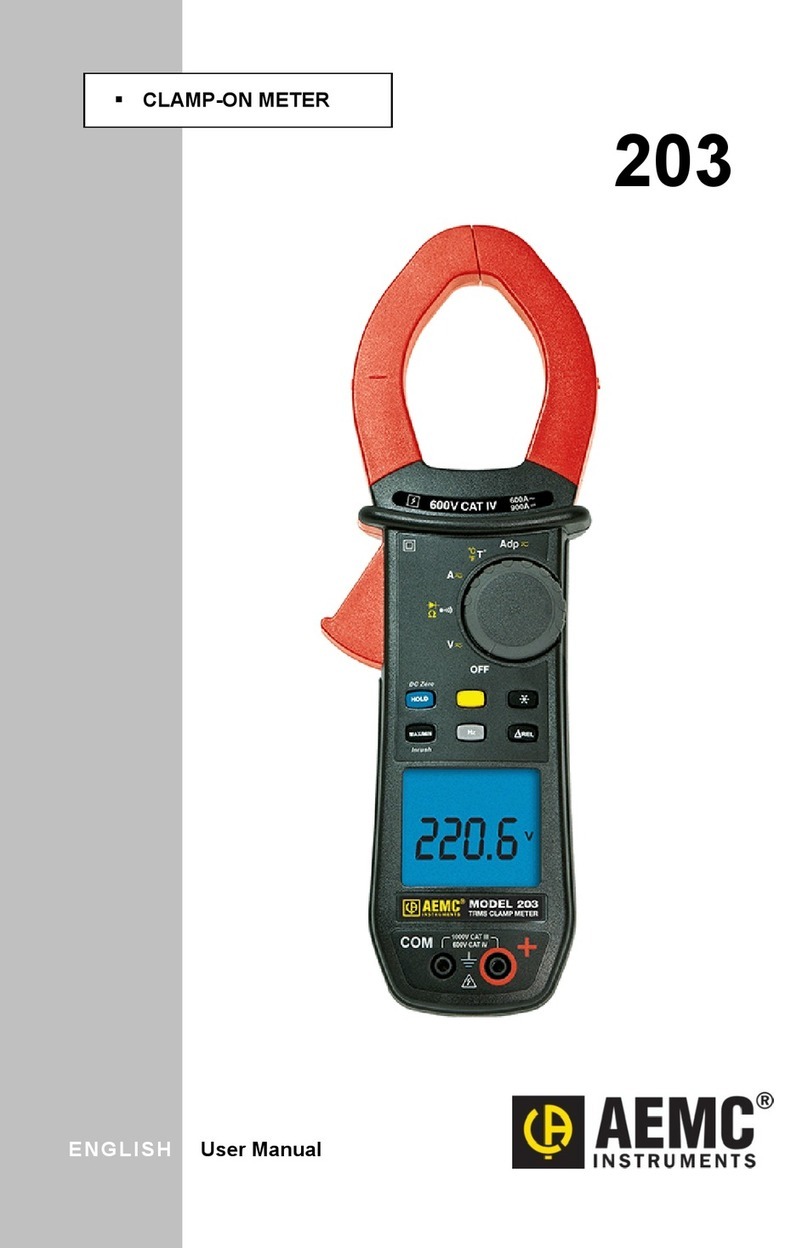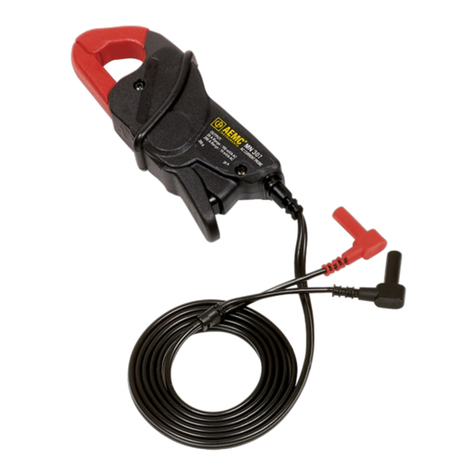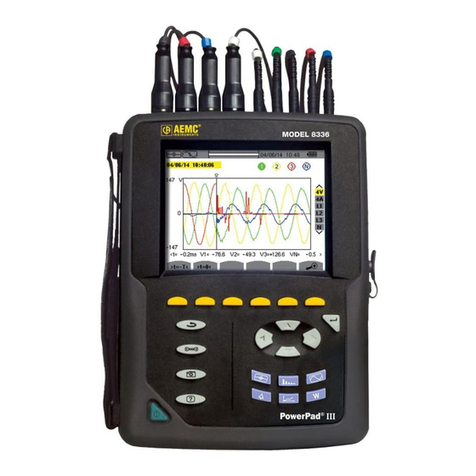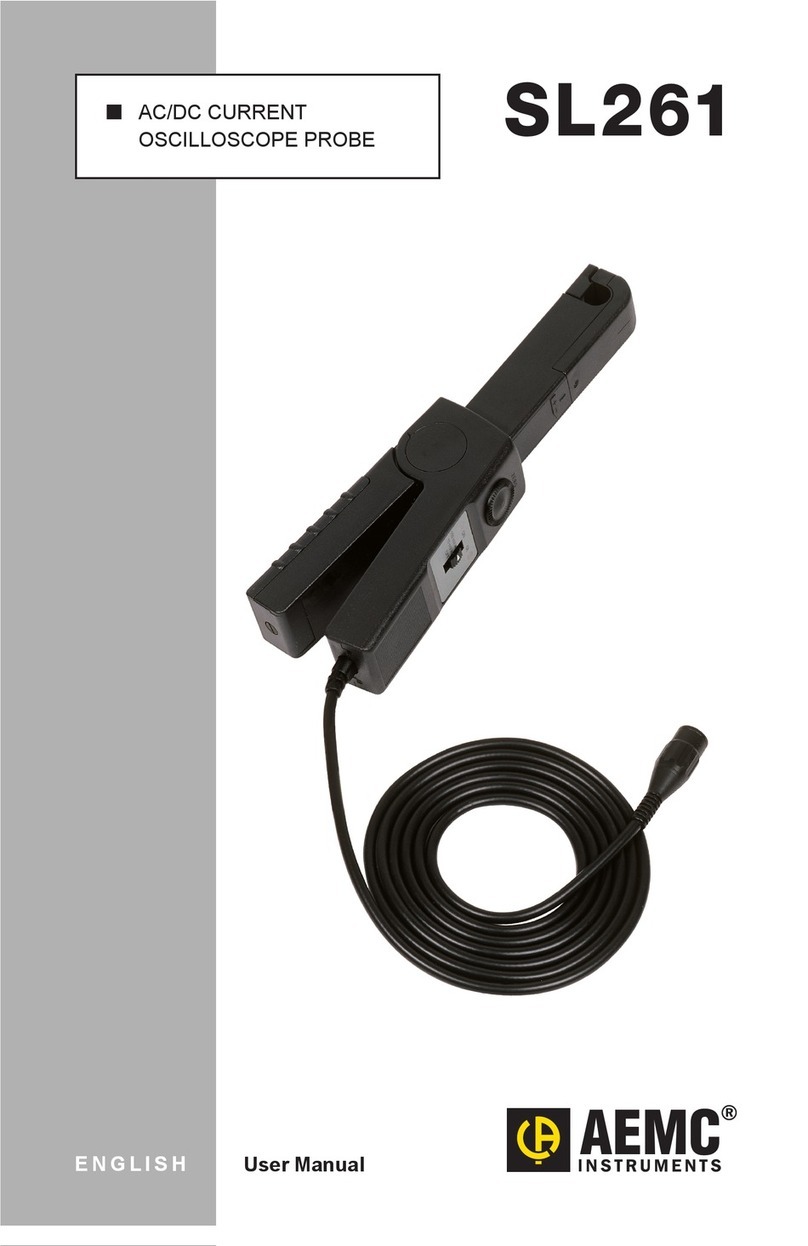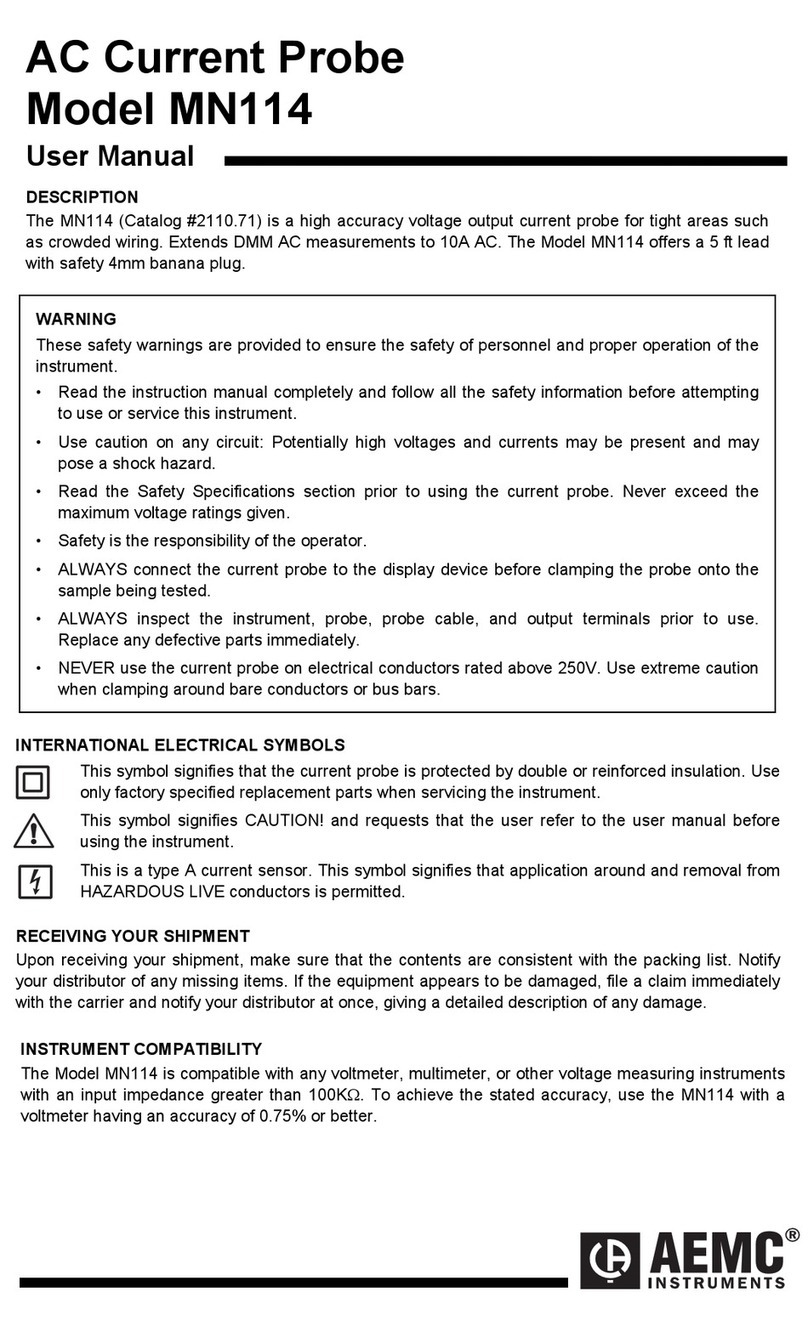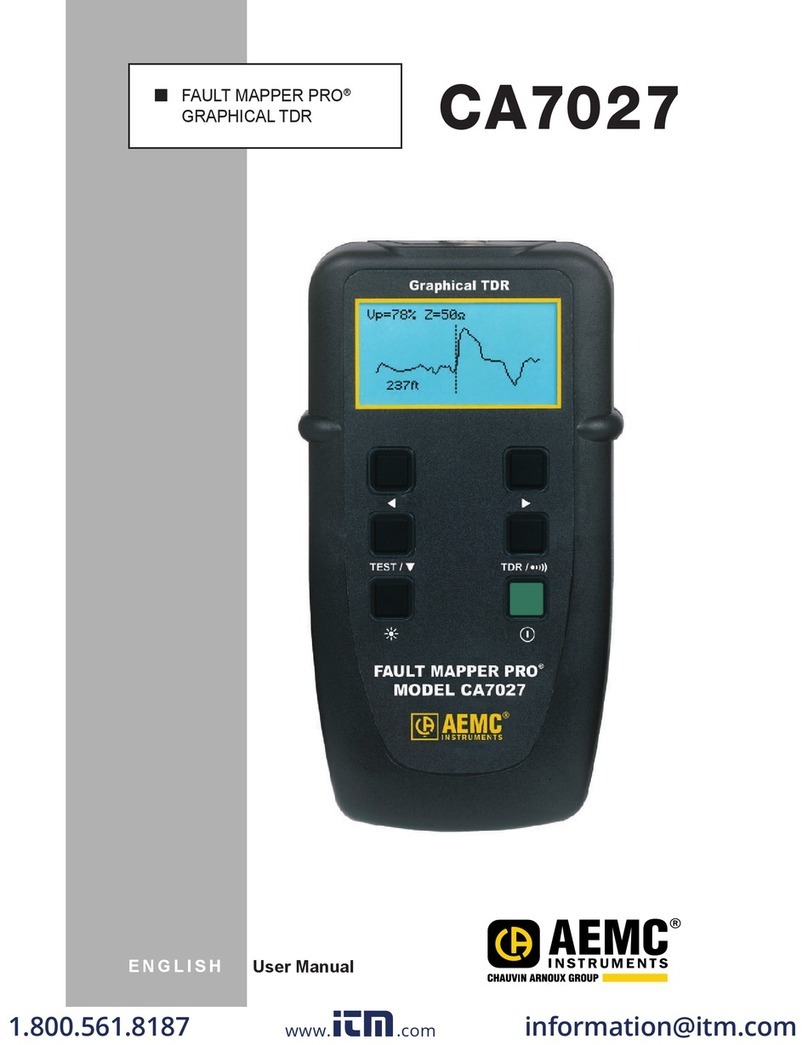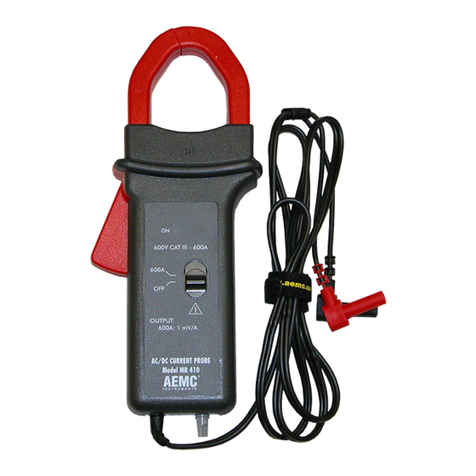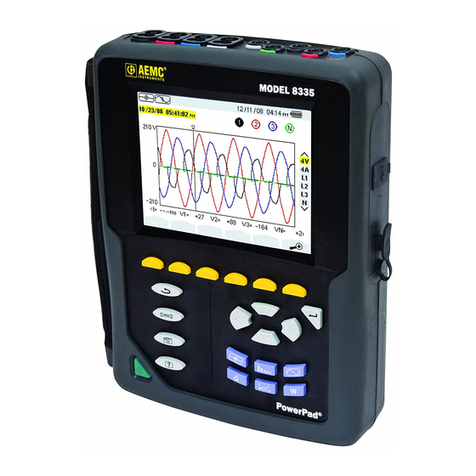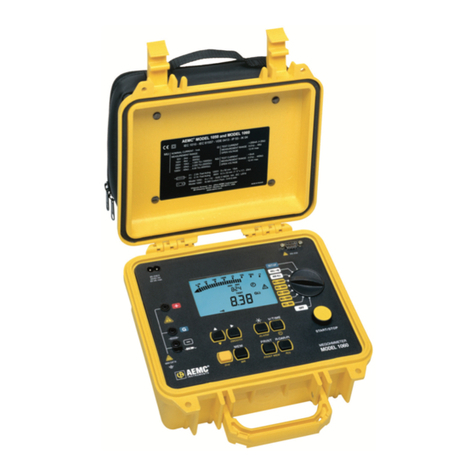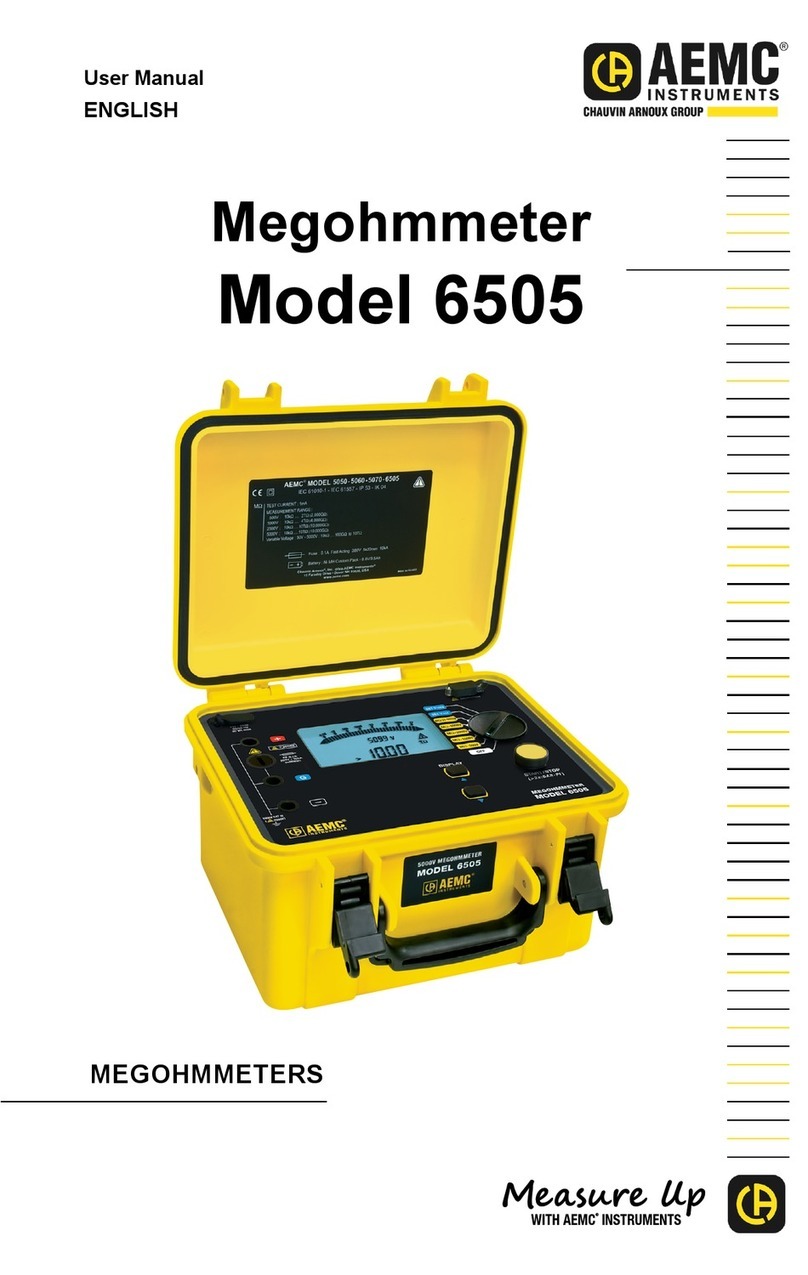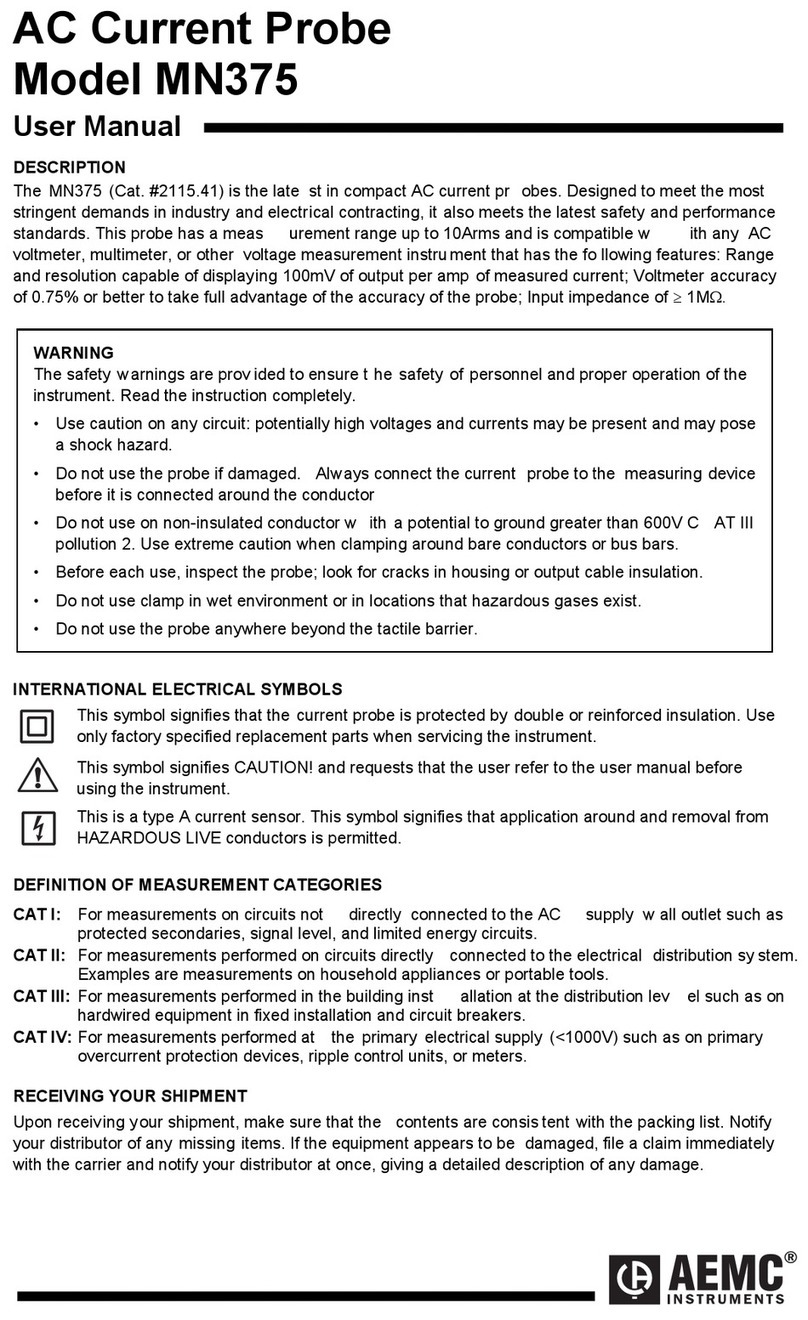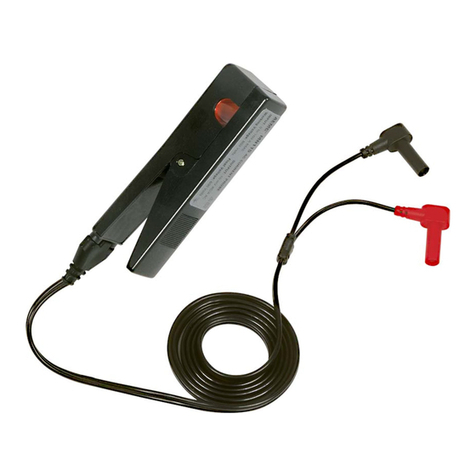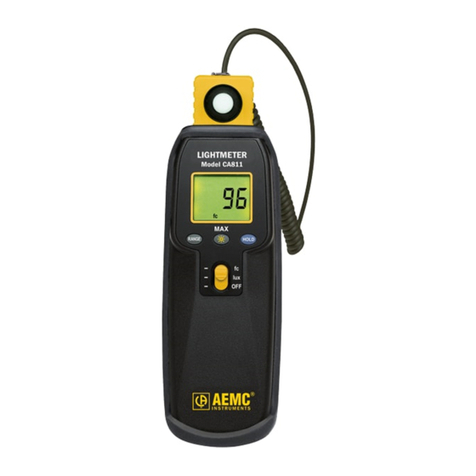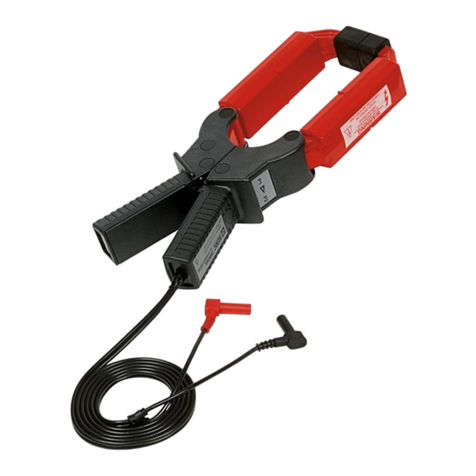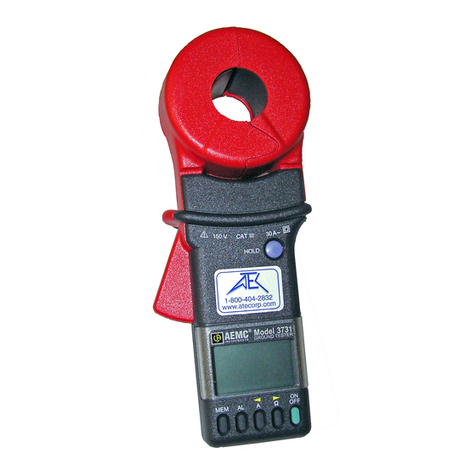
4 AC/DC Current Probes MR417 & MR527
TABLE OF CONTENTS
5
1.1 PRECAUTIONS FOR USE .......................................................................... 6
1.2 RECEIVING YOUR SHIPMENT .................................................................. 7
1.3 ORDERING INFORMATION........................................................................ 7
1.3.1 Replacement Parts/Accessories ........................................................ 7
2.1 INTERFACE.................................................................................................. 9
2.1.1 MR417................................................................................................ 9
2.1.2 MR527.............................................................................................. 10
11
3.1 BATTERY INSTALLATION......................................................................... 11
3.2 EXTERNAL POWER (OPTIONAL)............................................................ 11
3.3 TURNING THE INSTRUMENT ON ........................................................... 12
3.4 AUTO STANDBY......................................................................................... 12
3.5 DC ZERO ADJUSTMENT .......................................................................... 12
3.6 MEASUREMENTS ..................................................................................... 13
3.6.1 Making a Measurement.................................................................... 13
3.6.2 Converting to Current....................................................................... 13
14
4.1 REFERENCE CONDITIONS ..................................................................... 14
4.2 ELECTRICAL SPECIFICATIONS.............................................................. 14
..................................... 14
.................................. 18
................................... 20
................................ 24
4.3 OPERATING LIMITS (MR417 AND MR527)............................................. 26
4.4 VARIATIONS IN THE RANGE OF USE.................................................... 27
4.5 POWER SUPPLY ....................................................................................... 28
4.6 ENVIRONMENTAL CONDITIONS ............................................................ 28
4.7 MECHANICAL SPECIFICATIONS ............................................................ 29
4.7.1 Housing Protection........................................................................... 31
4.8 SAFETY SPECIFICATIONS ...................................................................... 31
32
5.1 CLEANING.................................................................................................. 32
5.2 BATTERY REPLACEMENT....................................................................... 32
5.3 REPAIR AND CALIBRATION..................................................................... 33
5.4 TECHNICAL AND SALES ASSISTANCE ................................................. 33
5.5 LIMITED WARRANTY................................................................................ 34
5.5.1 Warranty Repairs ............................................................................. 34












